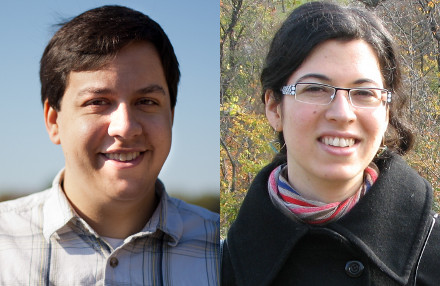Magazine: Letter from the editors
Are you a good match for XRDS?
FREE CONTENT FEATURE

Are you a good match for XRDS?
Full text also available in the ACM Digital Library as PDF | HTML | Digital Edition
Happy application season! Whether you're applying to Ph.D. programs, postdocs, or faculty positions, this is probably a very busy (and nerve-racking) time for you. Even if you're not currently "on the market" yourself, in the upcoming months you may find yourself taking part in your school or institution's applicant screening process. Such a process typically involves several rounds of careful review and discussion, ultimately culminating in the decision of who to accept and, in the less fortunate case, who to reject.
Beyond personal stories of triumph or disappointment, what goes on during hiring season is basically a large scale matching problemthink of a bipartite graph, with applicants on one side and institutions with open positions on the other, and the goal of matching applicants to positions according to mutual preferences of both sides. The standard computer science approach would be to feed the graph and preferences into an algorithm and get a good match as its output. In practice, however, the match is "computed" in a distributed way, through the individual decisions of the candidates and hiring institutions. With so much at stake for those involved, as well as potentially complex preferences, one can't help wondering about the nature and quality of the final outcome.
Recent Nobel laureate Al Roth has dedicated his career to wondering about such issues. Applying the beautiful mathematical theory of stable matchings developed by Lloyd Shapley (with whom he shares the prize) and David Gale (who passed away in 2008), he studied the design of job markets and school choice programs. It turns out that in many cases, "designing the market" by establishing rules and procedures that guide and coordinate individually-formed matches can be very beneficial. Consider, for example, what would happen if the Council of Graduate Schools wouldn't have set April 15 as "national signing day"; accepted graduate students may have had to face pressure to notify accepting schools immediately of their decision, or risk losing their spot. In some cases, a centralized matching algorithm is actually used, most notably in placing medical students into residencies.
Professor Roth has recently moved to Stanford University and is teaching a graduate course on market design. One thing he repeatedly tells his students is that if you want to convince decision makers to adopt your ideas, you have to find a way to effectively communicate the theory to non-experts. This ability is also crucial when applying to grad school or seeking a position. Being able to clearly and concisely explain what you work on and why you're passionate about it makes a huge differencewhether you're giving a short elevator pitch, an informal whiteboard presentation, or a job talk or interview.
This ability is one of the things we look for when inviting authors to contribute to XRDS. Even though XRDS issues are organized around a central topic or theme, and articles are written by experts in that particular field, our goal is for readers from all areas of computer science to enjoy and benefit from them. Writers are thus faced with the challenge of capturing the essence of their research and communicating the most interesting and deep ideas behind it, without assuming prior knowledge or obscuring it by too many technical details. This skill is an acquired tool, and is sometimes what separates a good researcher/practitioner from an exceptional one. Want to work on honing your skill, or maybe even try your hand at it for the first time? Please consider submitting an article about your research to XRDS. Stay tuned for next year's themes, which will be announced in the upcoming Spring issue!
Peter Kinnaird and Inbal Talgam-Cohen
©2012 ACM 1528-4972/12/12 $15.00
Permission to make digital or hard copies of part of this work for personal or classroom use is granted without fee provided that copies are not made or distributed for profit or commercial advantage and that copies bear this notice and the full citation on the first page or initial screen of the document. Copyrights for components of this work owned by others than ACM must be honored. Abstracting with credit is permitted. To copy otherwise, republish, post on servers, or redistribute requires prior specific permission and a fee. Permissions requests: [email protected].
The Digital Library is published by the Association for Computing Machinery. Copyright © 2012 ACM, Inc.


